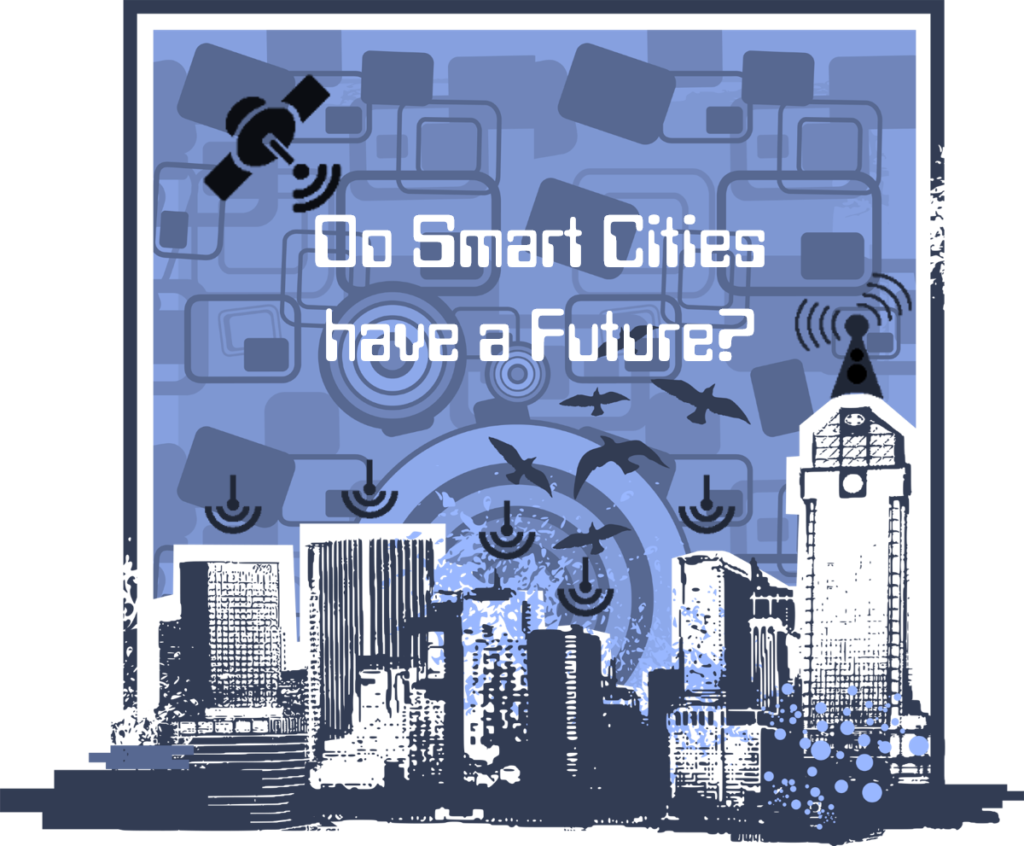Although many parts of the world continue to struggle with the Covid-19 pandemic, we can now see a light glimmering at the end of the tunnel. As the world adapts to a new normal, many people are beginning to contemplate the future of urban areas. During the pandemic, some so-called “smart city” projects were canceled as residents complained about technologies intruding on their lives. As a result, some stakeholders are beginning to question the future of smart cities. A few years ago, Mike Moore (@notTHEmikemoore), News & Features Editor for TechRadarPro and ITProPortal, wrote, “At its simplest level, a smart city will use connected technology to gather data on its surroundings using an interwoven network of sensors. These could be basic, e.g., monitoring whenever a car passes along a particular street, or developed enough to monitor precise measurements such as pollution levels in air particles.”[1] As Moore points out, the key to the smart city is connected technology. The question remains: What is this connected technology supposed to achieve? Some critics believe the ultimate aim is to build an urban surveillance environment. Supporters argue the goal should be to use scarce resources more wisely to provide the best possible quality of life for those living in urban environments. Moore asserts, “As the technology evolves, there is truly no limit to the possibility that smart cities could offer.”
Smart Cities Begin with Connectivity
Nick Watson (@NetworkingNick), Vice President EMEA at Ruckus Wireless, observes, “A report by McKinsey estimates that by 2025, our planet’s urban population will grow by a staggering 65 million people per year. The pressure is on to meet the needs of this changing demographic, and smart cities are going to play a crucial role.”[2] In order to play that “crucial role,” cities have to be connected. Adie Tomer (@AdieTomer), a fellow at the Brookings Institution, and Rob Puentes (@rpuentes), President & CEO of EnoTrans, bluntly state, “No industry or household in the world, will reach their future potential without access to broadband, it is the electricity of the 21st century.”[2] The same holds true for cities. No city in the world will reach its future potential without access to broadband. When preparing to meet the needs of urban residents, Watson insists, “A robust wireless network is a key part of this preparation — it is the ‘glue’ that holds smart cities together, enabling effortless sharing of workloads with datacenters and bridging connectivity across wired and wireless.” Most analysts now believe fifth generation (5G) telecommunications technology, along with fiber-optic cables, will provide the backbone connectivity to support an Internet of Things (IoT) in a smart city environment.
Cities need both fiber-optic and telecommunications networks in order to connect everything in the smart city environment. Rhymer Rigby (@rhymerrigby) explains, “In the so-called smart cities of the future, urban infrastructure will be interconnected; networked devices will be everywhere, from buses and cars to streetlamps, all linked to networks via the internet of things. Roads themselves will be online. Water and power grids will have smart sensors. All this should make our urban spaces more efficient and convenient, less polluted, safer and more livable.”[4] To make this vision come true, smart cities need to adopt a “system-of-systems” approach — with people being the most important “system.” IBM believes “people” are one of six core systems smart cities must optimize and integrate. The other five systems are: business; transport; communication; water; and energy. I would add a seventh system — waste management (which includes both trash and sanitation). The ecosystem that will optimize and integrate these diverse systems involves sensors, the Internet of Things, and cognitive computing. In this smart city ecosystem, sensors generate data which is transmitted via the IoT to a cognitive computing platform where it is integrated and analyzed to generate insights and actions. At least that’s the idealized version of how smart cities could work. Many analysts believe this system-of-systems approach is essential to make a city truly smart.
As you might imagine, connected city systems will generate massive amounts of data. As noted above, to make sense of the data and to provide urban planners and decision-makers with actionable insights, all that data needs to be analyzed. Cognitive technologies (aka artificial intelligence (AI) systems) must do the heavy lifting. Cognitive technologies are also required to help integrate system data and ensure urban system managers work with a shared dataset that ensures they aren’t working at cross purposes. Gianni Minetti, CEO of Paradox Engineering, argues interoperability is crucial in smart cities. He asserts, “Interoperability is a big issue for city innovation. The siloed approach that still exists in urban services management leads to fragmentation, complexity and increased costs, as well as missed opportunities relating to efficiency, service optimization and quality improvement, good practice and data-sharing.”[5] He asks, “Why should your city implement one system to manage streetlights, a separate infrastructure for parking facilities and mobility, another one for video surveillance, yet another for public Wi-Fi, and so on?” Good question. Cognitive technologies can help provide part of the answer. Eric Woods (@bordersthinking), Research director for smart cities at Navigant Research, explains, “Artificial Intelligence — in its many forms — will play a central role in managing city services and infrastructure. Such systems will be essential to manage the complexity of a fully connected urban environment. AI will also be intrinsic to creating resilient cities through the monitoring and containment of threats, whether human or natural. We are already seeing the battle lines drawn over how such systems are governed; what level of oversight is available to the public; and the implications for privacy. The forms of surveillance and decision-making we are willing to secede to algorithms and those who control them will have a profound influence on how we experience the city of the future.”[6]
The Smart City Future
Numerous science fiction movies focus on dystopian urban futures in which governance breaks down and criminal cartels rule in dark and grimy cities. While most of those movies paint an overly dark view of the future, a bright urban future is not guaranteed. Journalist Abdul Montaqim (@abdulmontaqim) explains, “The uncontrolled and exponential growth of metropolises around the world has led to developments that put mega-cities at risk and turn them into places that, at best, can be difficult to live in and, at worst, could severely limit the world’s future social and economic viability.”[7] Smart city technologies can help avoid such a future. They can especially help turn the tide on climate change. Woods reports, “Many cities already have plans to be carbon neutral or zero carbon cities by 2050 or earlier. Impressive as such commitments may be, making them a reality requires new approaches to urban infrastructure and services enabled by new energy systems, building and transportation technologies, and digital tools. It also requires new platforms that can support collaboration among city departments, businesses, and citizens in the transformation to a zero carbon economy.” That sounds like a system-of-systems approach to me.
Montaqim concludes, “Cities are the lifeblood of the 21st century. More than half of us live in them, and the 100 largest cities produce 25 per cent of the planet’s wealth.” Woods adds, “During the COVID-19 crisis, some smart city projects have been postponed or cancelled and investment diverted to new priority areas. Despite these setbacks, the fundamental need to invest in the modernization of urban infrastructure and services remains.” Woods asserts, if smart city initiatives are implemented correctly, they will result in “more equitable cities that can lift millions out of poverty, begin to heal the environmental damage of the past two centuries, and provide a range of new experiences based on the almost limitless potential of digital technology.” Ensuring cities improve the quality of life for urban residents will require the input and active participation of all stakeholders (i.e., government officials, private citizens, non-governmental organizations. academia, and commercial companies). Cheryl Wiebe (@cwiebe66), an Ecosystem Architect at Teradata, reminds us that the journey towards a bright, smart-city future begins by taking steps in the right direction. She concludes, “City leaders who take the time to plan which systems they want to implement, how they intend to integrate their data and when they plan on replacing or upgrading parts of their system of systems will ensure they have a dynamic, scalable data environment that they know how to leverage and secure. Following these steps will make it more likely that a smart city implementation will go smoothly, so city leaders — and the public — can benefit from these modern-day investments.”[8]
Footnotes
[1] Mike Moore, “What are Smart Cities? Everything you need to know,” ITProPortal, 18 July 2017.
[2] Nick Watson, “The future of smart cities and the role of Wi-Fi,” ITProPortal, 20 June 2017.
[3] Adie Tomer and Rob Puentes, “Here’s the Right Way to Build the Futuristic Cities of Our Dreams,” Wired, 23 April 2014.
[4] Rhymer Rigby, “Which technologies will underpin the smart cities of the future?” Financial Times, 9 September 2018 (subscription required).
[5] Gianni Minetti, “A smart city is an interoperable city,” Smart Cities World, 24 September 2019.
[6] Eric Woods, “Considering the future of smart cities in uncertain times,” Smart Energy International, 25 May 2021.
[7] Abdul Montaqim, “Historic opportunities presented by smart cities,” Robotics & Automation News, 26 January 2017.
[8] Cheryl Wiebe, “Smart city implementation: Get it right the first time,” IoT Agenda, 20 June 2017.





